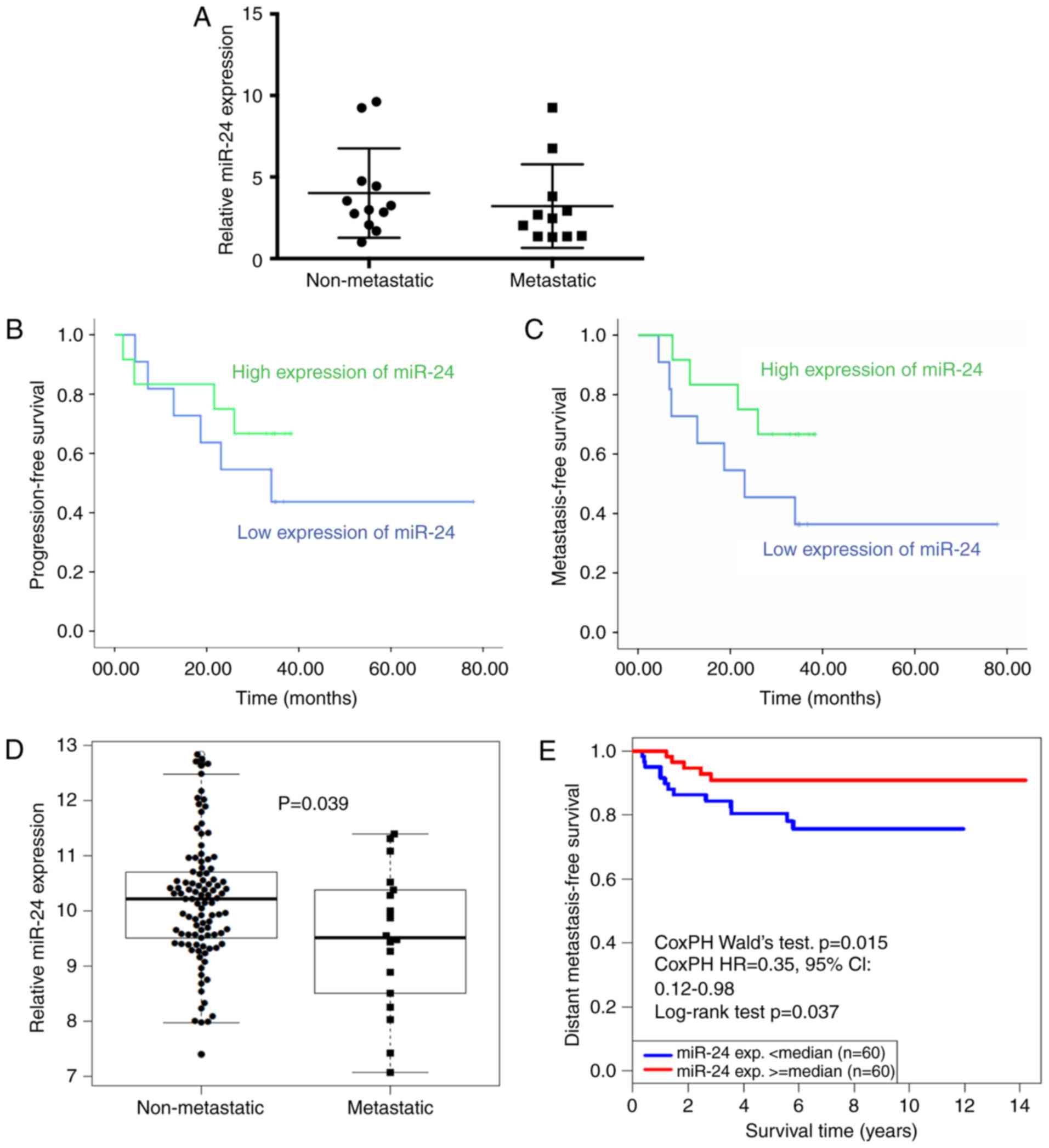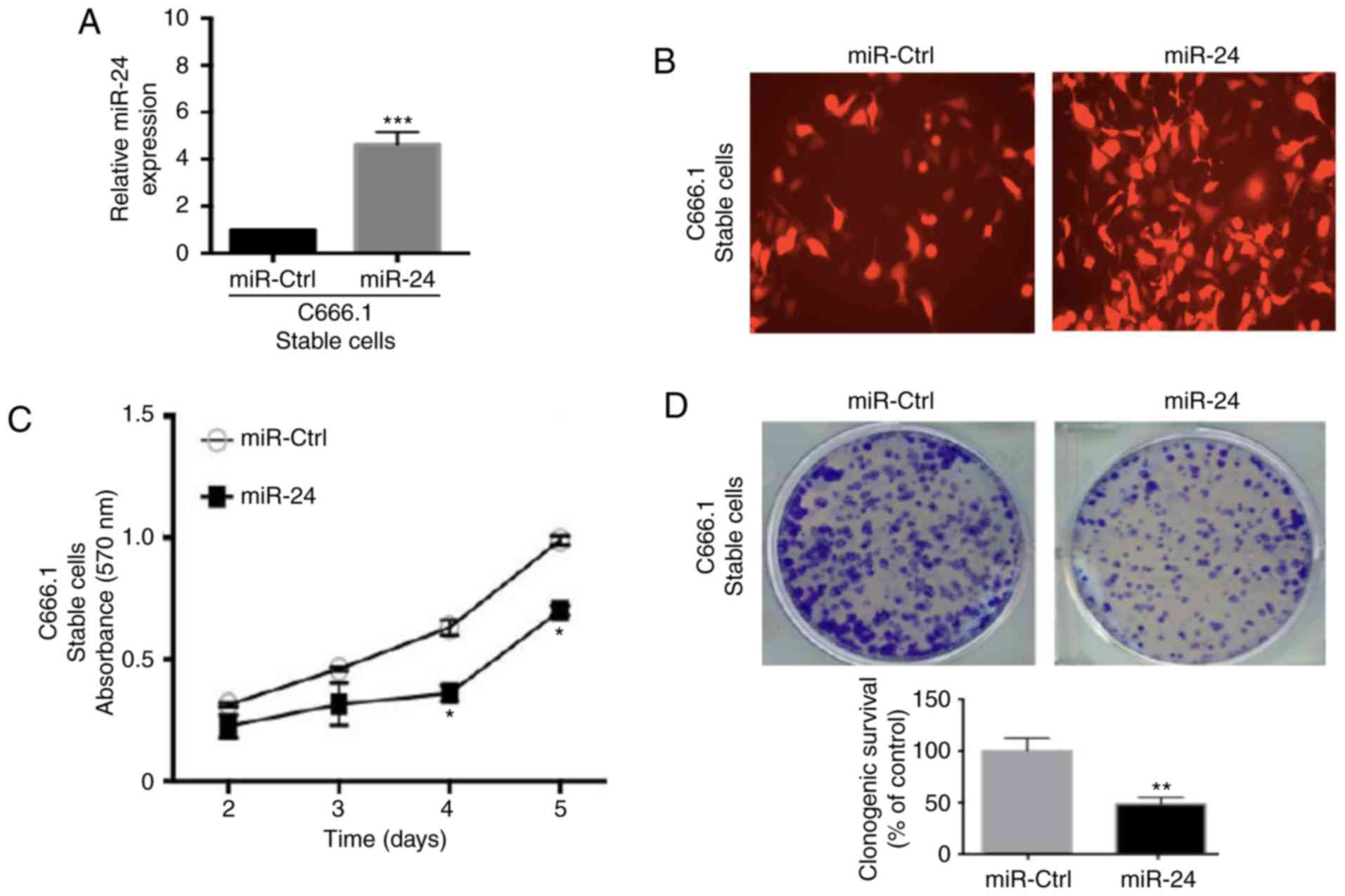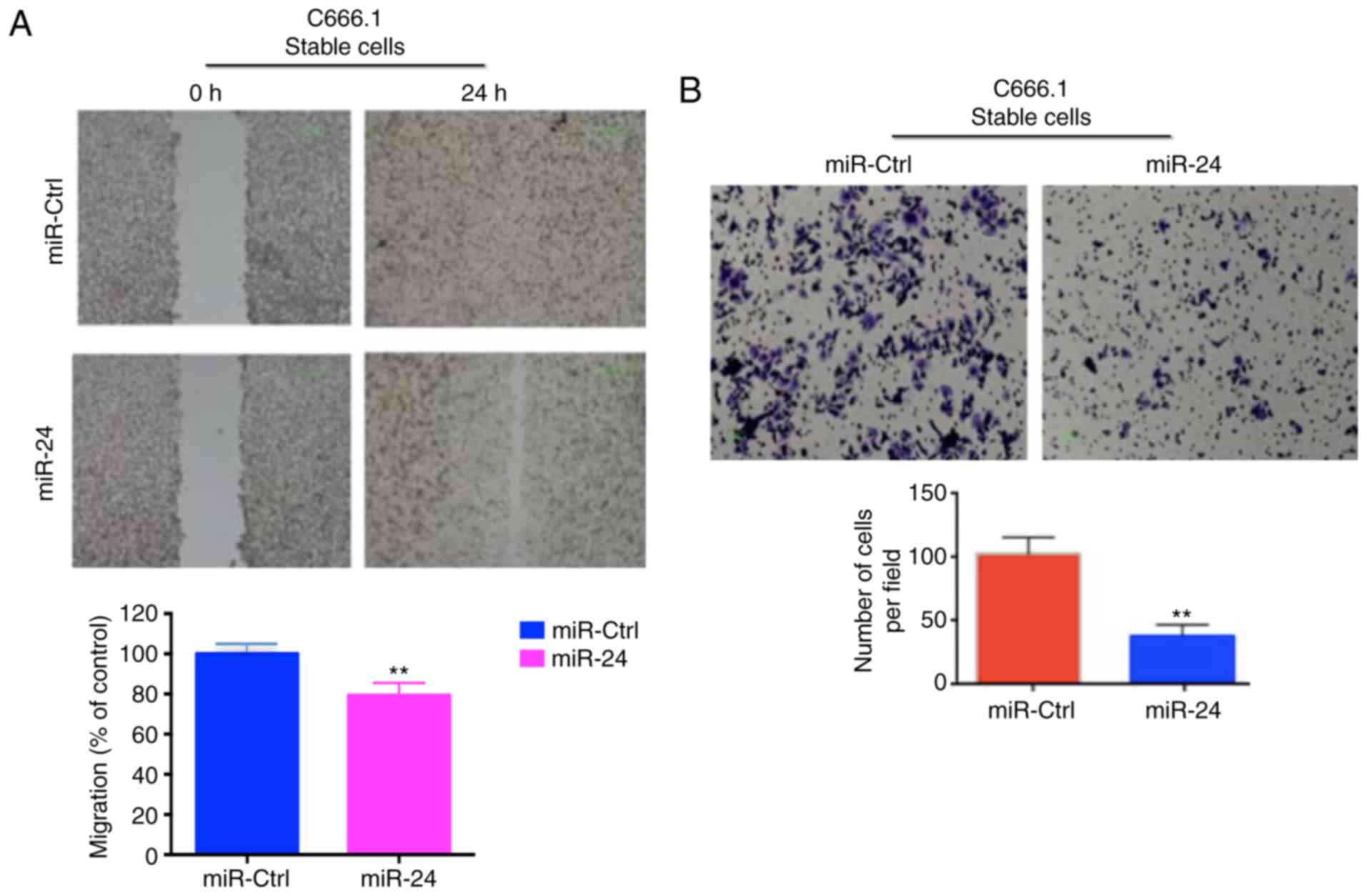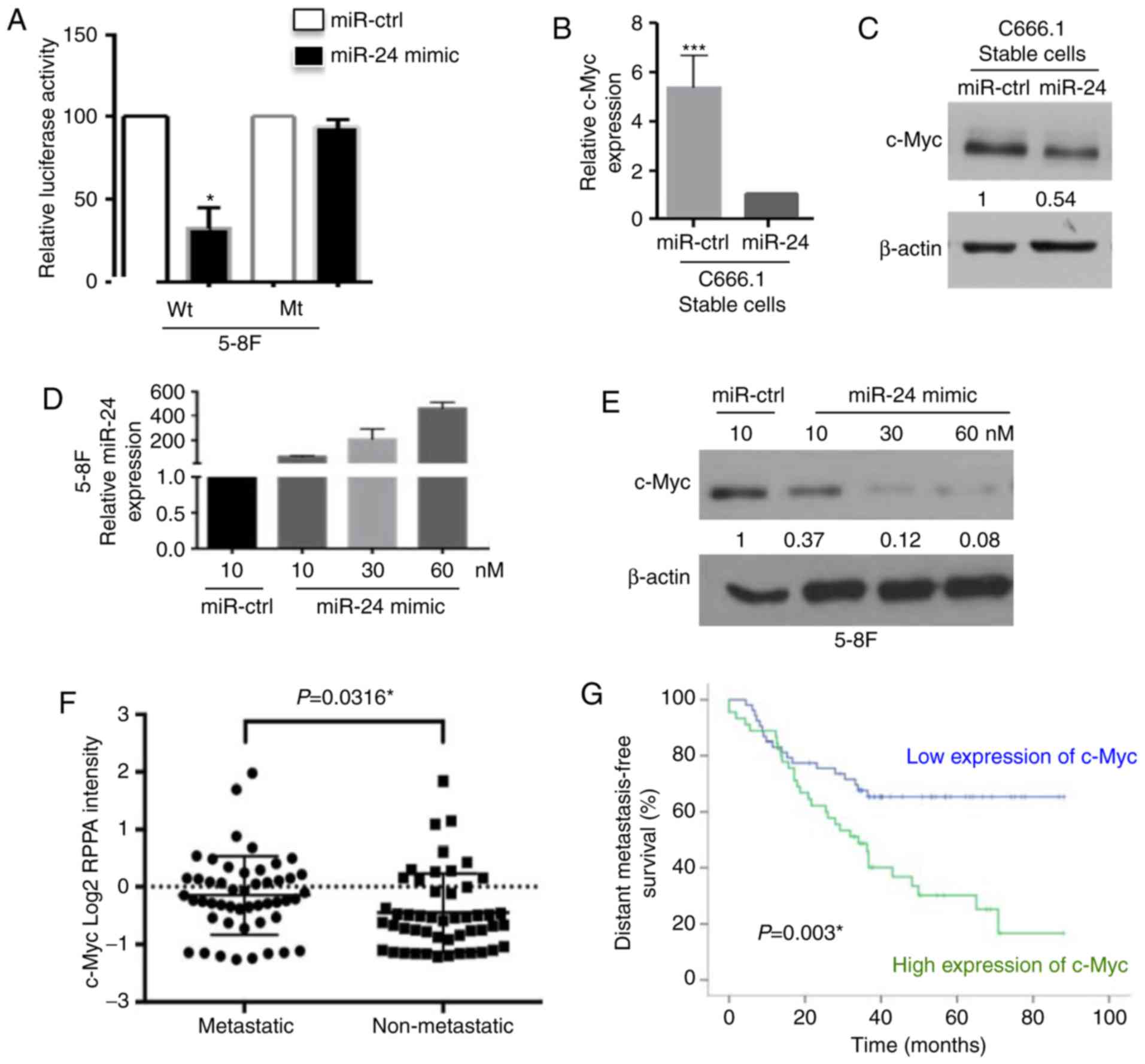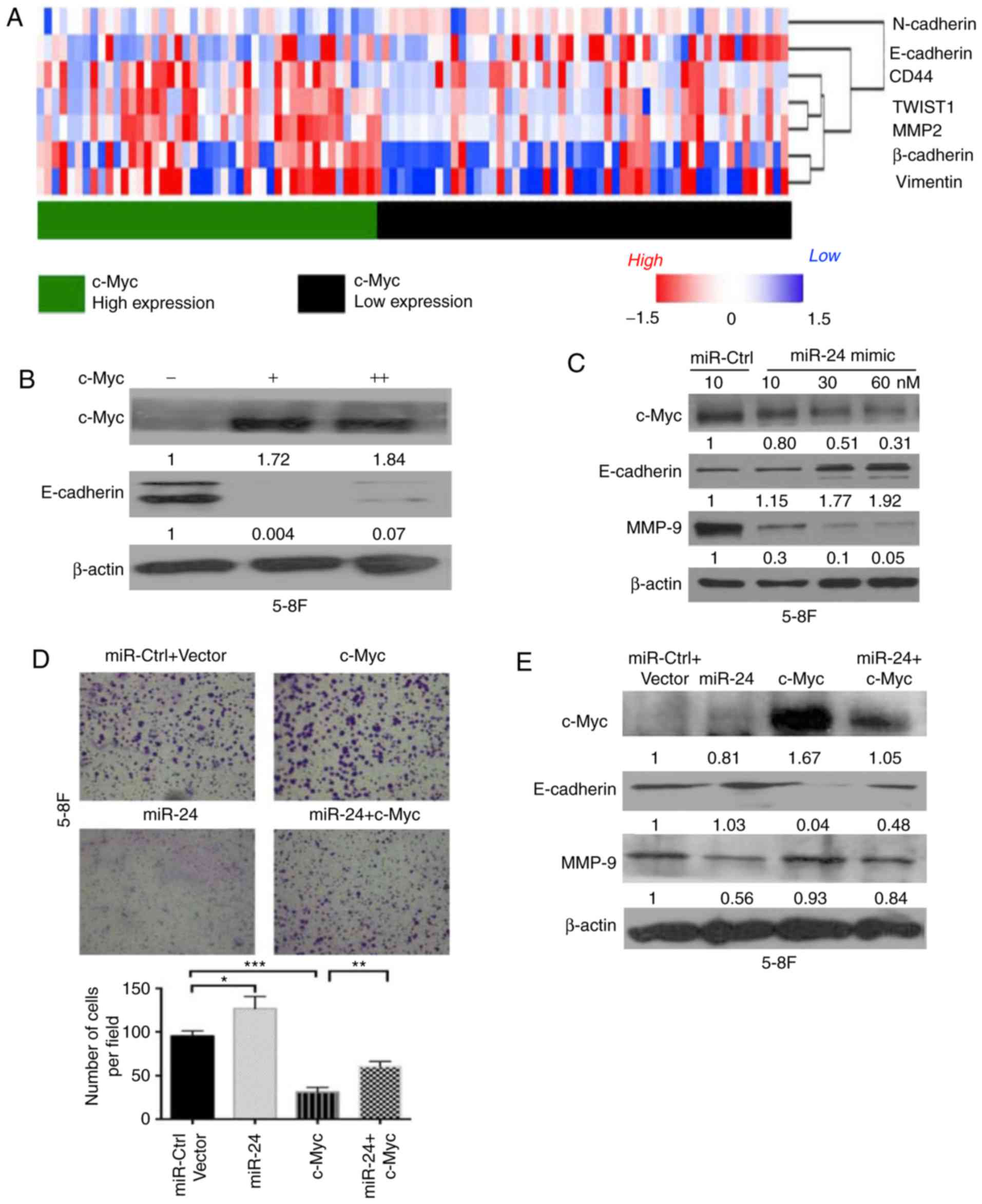|
1
|
Tsao SW, Yip YL, Tsang CM, Pang PS, Lau
VM, Zhang G and Lo KW: Etiological factors of nasopharyngeal
carcinoma. Oral Oncol. 50:330–338. 2014. View Article : Google Scholar : PubMed/NCBI
|
|
2
|
Chua MLK, Wee JTS, Hui EP and Chan ATC:
Nasopharyngeal carcinoma. Lancet. 387:1012–1024. 2016. View Article : Google Scholar : PubMed/NCBI
|
|
3
|
Chan A, Grégoire V, Lefebvre JL, Licitra L
and Felip E; and group EEEgw, : Nasopharyngeal Cancer:
EHNS-ESMO-ESTRO clinical practice guidelines for diagnosis,
treatment and follow-up. Ann Oncol. 21:v187–v189. 2010. View Article : Google Scholar : PubMed/NCBI
|
|
4
|
Blanchard P, Lee A, Marguet S, Leclercq J,
Ng WT, Ma J, Chan AT, Huang PY, Benhamou E, Zhu G, et al:
Chemotherapy and radiotherapy in nasopharyngeal carcinoma: An
update of the MAC-NPC meta-analysis. Lancet Oncol. 16:645–655.
2015. View Article : Google Scholar : PubMed/NCBI
|
|
5
|
Huang PY, Zeng Q, Cao KJ, Guo X, Guo L, Mo
HY, Wu PH, Qian CN, Mai HQ and Hong MH: Ten-year outcomes of a
randomised trial for locoregionally advanced nasopharyngeal
carcinoma: A single-institution experience from an endemic area.
Eur J Cancer. 51:1760–1770. 2015. View Article : Google Scholar : PubMed/NCBI
|
|
6
|
Lee AW, Ma BB, Ng WT and Chan AT:
Management of nasopharyngeal carcinoma: Current practice and future
perspective. J Clin Oncol. 33:3356–3364. 2015. View Article : Google Scholar : PubMed/NCBI
|
|
7
|
Lin S and Gregory RI: MicroRNA biogenesis
pathways in cancer. Nat Rev Cancer. 15:321–333. 2015. View Article : Google Scholar : PubMed/NCBI
|
|
8
|
Calin GA and Croce CM: MicroRNA signatures
in human cancers. Nat Rev Cancer. 6:857–866. 2006. View Article : Google Scholar : PubMed/NCBI
|
|
9
|
Klein U, Lia M, Crespo M, Siegel R, Shen
Q, Mo TW, Ambesi-Impiombato A, Califano A, Migliazza A, Bhagat G,
et al: The DLEU2/miR-15a/16-1 cluster controls b cell proliferation
and its deletion leads to chronic lymphocytic leukemia. Cancer
Cell. 17:28–40. 2010. View Article : Google Scholar : PubMed/NCBI
|
|
10
|
Calin GA, Dumitru CD, Shimizu M, Bichi R,
Zupo S, Noch E, Aldler H, Rattan S, Keating M, Rai K, et al:
Frequent deletions and down-regulation of micro-RNA genes miR15 and
miR16 at 13q14 in chronic lymphocytic leukemia. Proc Natl Acad Sci
USA. 99:15524–15529. 2002. View Article : Google Scholar : PubMed/NCBI
|
|
11
|
Liu G: Augmentation of response to
chemotherapy by microRNA-506 through regulation of RAD51 in serous
ovarian cancers. J Natl Cancer Inst. 109:2017.
|
|
12
|
Ding X, Park SI, McCauley LK and Wang CY:
Signaling between transforming growth factor β (TGF-β) and
transcription factor SNAI2 represses expression of microRNA miR-203
to promote epithelial-mesenchymal transition and tumor metastasis.
J Biol Chem. 288:10241–10253. 2013. View Article : Google Scholar : PubMed/NCBI
|
|
13
|
Ma L, Young J, Prabhala H, Pan E, Mestdagh
P, Muth D, Teruya-Feldstein J, Reinhardt F, Onder TT, Valastyan S,
et al: miR-9, a MYC/MYCN-activated microRNA, regulates E-cadherin
and cancer metastasis. Nat Cell Biol. 12:247–256. 2010. View Article : Google Scholar : PubMed/NCBI
|
|
14
|
Asangani IA, Rasheed SA, Nikolova DA,
Leupold JH, Colburn NH, Post S and Allgayer H: MicroRNA-21 (miR-21)
post-transcriptionally downregulates tumor suppressor Pdcd4 and
stimulates invasion, intravasation and metastasis in colorectal
cancer. Oncogene. 27:2128–2136. 2008. View Article : Google Scholar : PubMed/NCBI
|
|
15
|
Ma L, Reinhardt F, Pan E, Soutschek J,
Bhat B, Marcusson EG, Teruya-Feldstein J, Bell GW and Weinberg RA:
Therapeutic silencing of miR-10b inhibits metastasis in a mouse
mammary tumor model. Nat Biotechnol. 28:341–347. 2010. View Article : Google Scholar : PubMed/NCBI
|
|
16
|
Wang S, Zhang R, Claret FX and Yang H:
Involvement of microRNA-24 and DNA methylation in resistance of
nasopharyngeal carcinoma to ionizing radiation. Mol Cancer Ther.
13:3163–3174. 2014. View Article : Google Scholar : PubMed/NCBI
|
|
17
|
Wang S, Pan Y, Zhang R, Xu T, Wu W, Zhang
R, Wang C, Huang H, Calin CA, Yang H and Claret FX: Hsa-miR-24-3p
increases nasopharyngeal carcinoma radiosensitivity by targeting
both the 3′UTR and 5′UTR of Jab1/CSN5. Oncogene. 35:6096–6108.
2016. View Article : Google Scholar : PubMed/NCBI
|
|
18
|
Claret FX, Hibi M, Dhut S, Toda T and
Karin M: A new group of conserved coactivators that increase the
specificity of AP-1 transcription factors. Nature. 383:453–457.
1996. View
Article : Google Scholar : PubMed/NCBI
|
|
19
|
Bruce JP, Hui AB, Shi W, Perez-Ordonez B,
Weinreb I, Xu W, Haibe-Kains B, Waggott DM, Boutros PC, O'Sullivan
B, et al: Identification of a microRNA signature associated with
risk of distant metastasis in nasopharyngeal carcinoma. Oncotarget.
6:4537–4550. 2015. View Article : Google Scholar : PubMed/NCBI
|
|
20
|
Xu T, Su B, Huang P, Wei W, Deng Y, Sehgal
V, Wang D, Jiang J, Zhang G, Li A, et al: Novel biomarkers of
nasopharyngeal carcinoma metastasis risk identified by reverse
phase protein array based tumor profiling with consideration of
plasma Epstein-Barr virus DNA load. Proteomics Clin Appl. 11:2017.
View Article : Google Scholar
|
|
21
|
Rassidakis GZ, Claret FX, Lai R, Zhang Q,
Sarris AH, McDonnell TJ and Medeiros LJ: Expression of p27(Kip1)
and c-Jun activation binding protein 1 are inversely correlated in
systemic anaplastic large cell lymphoma. Clin Cancer Res.
9:1121–1128. 2003.PubMed/NCBI
|
|
22
|
Kouvaraki MA, Rassidakis GZ, Tian L, Kumar
R, Kittas C and Claret FX: Jun activation domain-binding protein 1
expression in breast cancer inversely correlates with the cell
cycle inhibitor p27(Kip1). Cancer Res. 63:2977–2981.
2003.PubMed/NCBI
|
|
23
|
Livak KJ and Schmittgen TD: Analysis of
relative gene expression data using real-time quantitative PCR and
the 2(-Delta Delta C(T)) method. Methods. 25:402–408. 2001.
View Article : Google Scholar : PubMed/NCBI
|
|
24
|
Shull AY, Noonepalle SK, Awan FT, Liu J,
Pei L, Bollag RJ, Salman H, Ding ZY and Shi HD: RPPA-based protein
profiling reveals eIF4G overexpression and 4E-BP1 serine 65
phosphorylation as molecular events that correspond with a
pro-survival phenotype in chronic lymphocytic leukemia. Oncotarget.
6:14632–14645. 2015. View Article : Google Scholar : PubMed/NCBI
|
|
25
|
Lal A, Navarro F, Maher CA, Maliszewski
LE, Yan N, O'Day E, Chowdhury D, Dykxhoorn DM, Tsai P, Hoffman O,
et al: miR-24 Inhibits cell proliferation by targeting E2F2, MYC,
and other cell-cycle genes via binding to ‘Seedless’ 3′ UTR
MicroRNA recognition elements. Mol Cell. 35:610–625. 2009.
View Article : Google Scholar : PubMed/NCBI
|
|
26
|
Liu N, Chen NY, Cui RX, Li WF, Li Y, Wei
RR, Zhang MY, Sun Y, Huang BJ, Chen M, et al: Prognostic value of a
microRNA signature in nasopharyngeal carcinoma: A microRNA
expression analysis. Lancet Oncol. 13:633–641. 2012. View Article : Google Scholar : PubMed/NCBI
|
|
27
|
Liu N, Cui RX, Sun Y, Guo R, Mao YP, Tang
LL, Jiang W, Liu X, Cheng YK, He QM, et al: A four-miRNA signature
identified from genome-wide serum miRNA profiling predicts survival
in patients with nasopharyngeal carcinoma. Int J Cancer.
134:1359–1368. 2014. View Article : Google Scholar : PubMed/NCBI
|
|
28
|
Boxer LM and Dang CV: Translocations
involving c-myc and c-myc function. Oncogene. 20:5595–5610. 2001.
View Article : Google Scholar : PubMed/NCBI
|
|
29
|
Vita M and Henriksson M: The Myc
oncoprotein as a therapeutic target for human cancer. Semin Cancer
Biol. 16:318–330. 2006. View Article : Google Scholar : PubMed/NCBI
|
|
30
|
Albihn A, Johnsen JI and Henriksson MA:
MYC in oncogenesis and as a target for cancer therapies. Adv Cancer
Res. 107:163–224. 2010. View Article : Google Scholar : PubMed/NCBI
|
|
31
|
Wang X, Liu Y, Shao D, Qian Z, Dong Z, Sun
Y, Xing X, Cheng X, Du H, Hu Y, et al: Recurrent amplification of
MYC and TNFRSF11B in 8q24 is associated with poor survival in
patients with gastric cancer. Gastric Cancer. 19:116–127. 2016.
View Article : Google Scholar : PubMed/NCBI
|
|
32
|
Wang W, Deng J, Wang Q, Yao Q, Chen W, Tan
Y, Ge Z, Zhou J and Zhou Y: Synergistic role of Cul1 and c-Myc:
Prognostic and predictive biomarkers in colorectal cancer. Oncol
Rep. 38:245–252. 2017. View Article : Google Scholar : PubMed/NCBI
|
|
33
|
Seo HK, Ahn KO, Jung NR, Shin JS, Park WS,
Lee KH, Lee SJ and Jeong KC: Antitumor activity of the c-Myc
inhibitor KSI-3716 in gemcitabine-resistant bladder cancer.
Oncotarget. 5:326–337. 2014. View Article : Google Scholar : PubMed/NCBI
|
|
34
|
Carey JP, Karakas C, Bui T, Chen X,
Vijayaraghavan S, Zhao Y, Wang J, Mikule K, Litton JK, Hunt KK and
Keyomarsi K: Synthetic lethality of PARP inhibitors in combination
with MYC blockade is independent of BRCA status in triple negative
breast cancer. Cancer Res. 78:742–757. 2017. View Article : Google Scholar : PubMed/NCBI
|
|
35
|
Wang WJ, Wu SP, Liu JB, Shi YS, Huang X,
Zhang QB and Yao KT: MYC regulation of CHK1 and CHK2 promotes
radioresistance in a stem cell-like population of nasopharyngeal
carcinoma cells. Cancer Res. 73:1219–1231. 2013. View Article : Google Scholar : PubMed/NCBI
|
|
36
|
Zhou W, Feng X, Ren C, Jiang X, Liu W,
Huang W, Liu Z, Li Z, Zeng L, Wang L, et al: Over-expression of
BCAT1, a c-Myc target gene, induces cell proliferation, migration
and invasion in nasopharyngeal carcinoma. Mol Cancer. 12:532013.
View Article : Google Scholar : PubMed/NCBI
|
|
37
|
Zaidi SK, Dowdy CR, Van Wijnen AJ, Lian
JB, Raza A, Stein JL, Croce CM and Stein GS: Altered Runx1
subnuclear targeting enhances myeloid cell proliferation and blocks
differentiation by activating a miR-24/MKP-7/MAPK network. Cancer
Res. 69:8249–8255. 2009. View Article : Google Scholar : PubMed/NCBI
|
|
38
|
Chen L, Zhang A, Li Y, Zhang K, Han L, Du
W, Yan W, Li R, Wang Y, Wang K, et al: MiR-24 regulates the
proliferation and invasion of glioma by ST7L via β-catenin/Tcf-4
signaling. Cancer Lett. 329:174–180. 2013. View Article : Google Scholar : PubMed/NCBI
|
|
39
|
Mishra PJ, Song B, Mishra PJ, Wang Y,
Humeniuk R, Banerjee D, Merlino G, Ju JF and Bertino JR: MiR-24
tumor suppressor activity is regulated independent of p53 and
through a target site polymorphism. Plos One. 4:e84452009.
View Article : Google Scholar : PubMed/NCBI
|
|
40
|
Duan Y, Hu L, Liu B, Yu B, Li J, Yan M, Yu
Y, Li C, Su L, Zhu Z, et al: Tumor suppressor miR-24 restrains
gastric cancer progression by downregulating RegIV. Mol Cancer.
13:1272014. View Article : Google Scholar : PubMed/NCBI
|
|
41
|
Papadimitriou E, Vasilaki E, Vorvis C,
Iliopoulos D, Moustakas A, Kardassis D and Stournaras C:
Differential regulation of the two RhoA-specific GEF isoforms
Net1/Net1A by TGF-β and miR-24: Role in epithelial-to-mesenchymal
transition. Oncogene. 31:2862–2875. 2012. View Article : Google Scholar : PubMed/NCBI
|
|
42
|
Thiery JP: Epithelial-mesenchymal
transitions in tumour progression. Nat Rev Cancer. 2:442–454. 2002.
View Article : Google Scholar : PubMed/NCBI
|
|
43
|
Onder TT, Gupta PB, Mani SA, Yang J,
Lander ES and Weinberg RA: Loss of E-cadherin promotes metastasis
via multiple downstream transcriptional pathways. Cancer Res.
68:3645–3654. 2008. View Article : Google Scholar : PubMed/NCBI
|
|
44
|
Plaks V, Chou J, Maynard C, Nguyen NH,
Kong NW, Solomonov I, Talmi-Frank D, Bonnans C, Sagi I and Werb Z:
Targeting matrix metalloproteinases (MMP) for anti-metastatic
therapy: Blocking active MMP9 abrogates metastatic niche formation
and prevents metastatic seeding in a breast cancer model. Cancer
Res. 75:2015. View Article : Google Scholar
|
|
45
|
Gravdal K, Halvorsen OJ, Haukaas SA and
Akslen LA: A switch from E-cadherin to N-cadherin expression
indicates epithelial to mesenchymal transition and is of strong and
independent importance for the progress of prostate cancer. Clin
Cancer Res. 13:7003–7011. 2007. View Article : Google Scholar : PubMed/NCBI
|
|
46
|
Gonzalez DM and Medici D: Signaling
mechanisms of the epithelial-mesenchymal transition. Sci Signal.
7:re82014. View Article : Google Scholar : PubMed/NCBI
|
|
47
|
Smith AP, Verrecchia A, Fagà G, Doni M,
Perna D, Martinato F, Guccione E and Amati B: A positive role for
Myc in TGFbeta-induced Snail transcription and
epithelial-to-mesenchymal transition. Oncogene. 28:422–430. 2009.
View Article : Google Scholar : PubMed/NCBI
|
|
48
|
Chan CH, Lee SW, Li CF, Wang J, Yang WL,
Wu CY, Wu J, Nakayama KI, Kang HY, Hung MC, et al: Deciphering the
transcriptional complex critical for RhoA gene expression and
cancer metastasis. Nat Cell Biol. 12:457–467. 2010. View Article : Google Scholar : PubMed/NCBI
|















